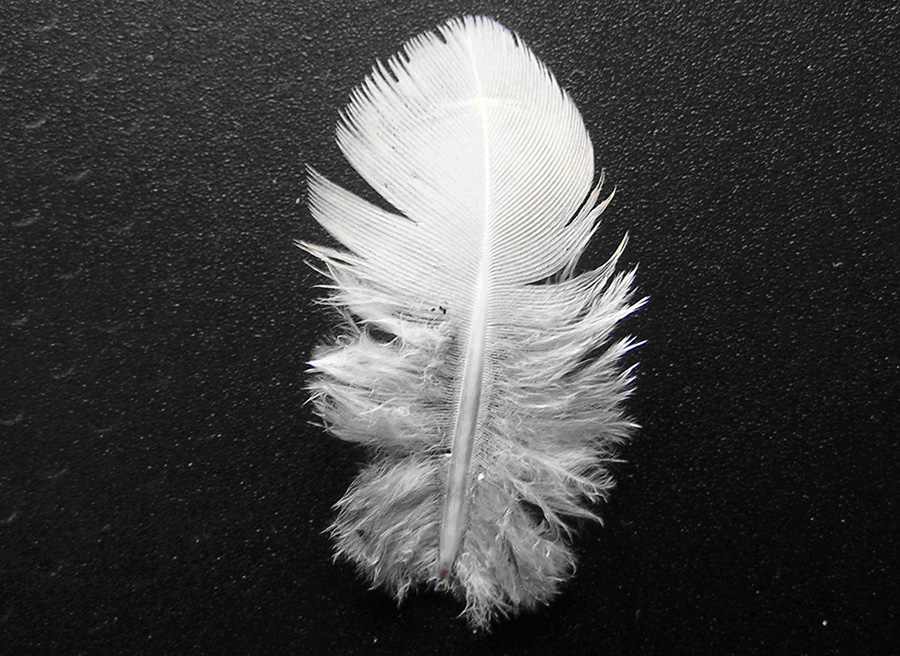
Keratins are a group of fibrous proteins found in mammalian hair, horns and hooves, the baleen of whales, and the feathers, beaks and claws of birds. Feathers consist of beta-keratins, which makes them tougher than mammalian hair made of alpha-keratins. A socket in the skin holds the calamus or quill, the naked portion of the shaft. The remainder of the shaft, the rachis, the central hollow part, supports the vane. Our ancestors used the hollow feature of large bird feathers, usually geese, to make quill pens, which held ink in the stem. The Latin for feather is penna, hence our words “pen” and, the knife used to trim the quill, the “penknife”. No doubt, those same ancestors noticed that grooves on the undersides of the calamus and rachis give the quill feathers greater rigidity than simple tubes.
The two sides of the vane each consist of a number of fine branches. These in turn have even finer sub-branches. A kind of natural Velcro mechanism holds the barbs and barbules together. The upper barbules have a series of hooks that catch the lower convex ones. This interlocking system allows a feather to act as one unit as air flows over it. The water repellency of contour feathers derives mainly from the interlocking structure of the barbules, but a film of oil gland secretion also helps.
As a boy, I often tested the strength of feather barbules and tried to reattach them. Nature unzipped the outer ends of owl feathers, which lack barbules, making the edges softer to render their flight silent and deadly.
Though durable, feathers require daily maintenance to keep them clean, properly aligned, and free of parasites but the need for wings to fly deprives birds of hands. Their 14 neck vertebrae, compared to our six, enable them to reach each feather with their beaks. Despite the incredible lightness of feathers, a bird's plumage weighs two or three times more than its skeleton, since many bones are hollow and contain air sacs. In terms of numbers of feathers, the champions are the Tundra Swans, once called Whistling Swans, which visit the Stornetta Ranch in winter. They each carry 25,000 compared to the 940 much smaller feathers of the Ruby Hummingbird, the bird with the lowest number.
Feathers are instrumental in temperature regulation, flying, display and camouflage. Insulation is very important in a warm-blooded animal. Most birds maintain a body temperature at around 104°F. Current scientific thinking has flight evolving in birds after they developed feathers for insulation, and the ability to fly added selective pressure to make feathers larger, stronger and refine their structure.
The third function of feathers is to control appearance. Your Thanksgiving turkey looks very different to one in full plumage. Color in feathers contributes secondary sexual characteristics and attraction during display. Consider the tail of male Wild Turkeys. It also allows for camouflage of predator and prey.
Perhaps a well-camouflaged hawk startled and scattered the doves below my feeder. Unfortunately, the one that headed south smashed into my house leaving a feather memento and a powder ring on my window. In the next newsletter, we will take a closer look at types of feathers and discover the source of that powder.
Back to ... Mendocino Coast Audubon Society Newsletter Articles | Home page